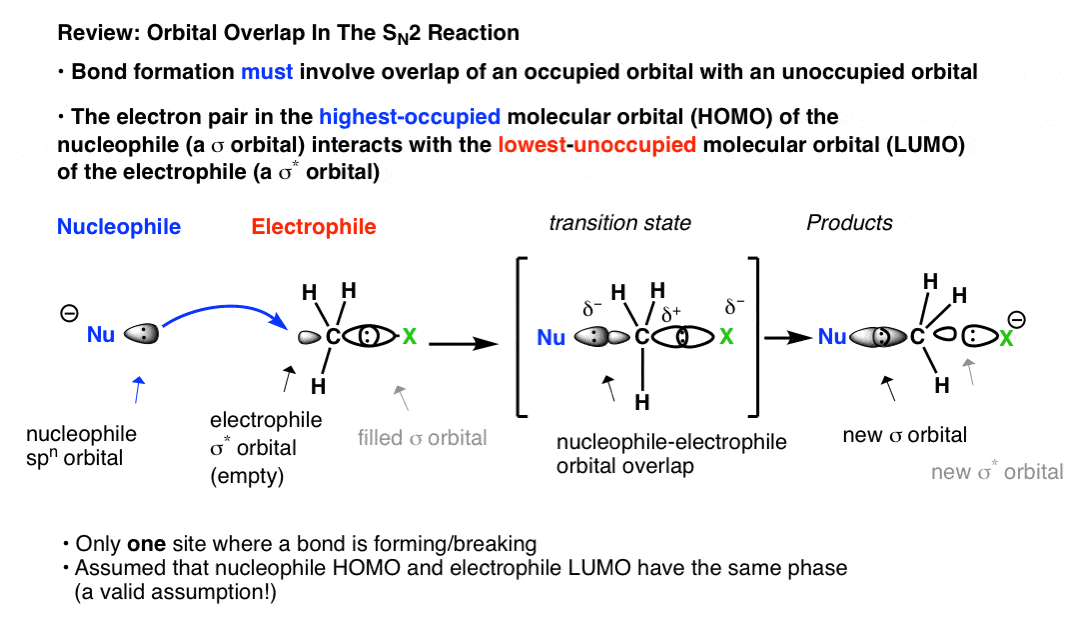

Th e h ighest occupied nioleciilar orbital (HOMO is t In the example, three orbitals are occupied by-electron s and two orbitals arc nn occupied. For an odd n nrn her of electron s, at least on e orbital rn ust be singly occupied. If the mini her of electrons, N, is even, yon can haven dosed shell (as shown ) where the occupied orbitals each contain two electron s. Both the energy and the orbital coefficients of the HOMO and LUMO of the reactants are taken into account. The course of a chemical reaction is rationali2ed on the basis of the highest occupied molecular orbital (HOMO) and the lowest unoccupied molecular orbital (LUMO), the frontier orbitals. One of the most successful methods for explaining the course of chemical reactions is frontier molecular orbital (FMO) theory. In view of this, early quantum mechanical approximations still merit interest, as they can provide quantitative data that can be correlated with observations on chemical reactivity.

Semiempirical (MNDO) calculations established that the highest occupied molecular orbital (HOMO) was primarily localized on the boron cage cluster, while the lowest occupied molecular orbital (LUMO) was mostly concentrated. This work cast valuable light on these systems, as UV-vis spectroscopic analysis clearly identified a charge-transfer band centered at = 319 nm for 4b, for example, and excitation at this wavelength led to emission at Xeni = 480nm (Figure 15.3). 1 which show the direction in which electrons move). ĭepending on the positions of the highest occupied molecular orbital (HOMO) and lowest occupied molecular orbital (LUMO) of the dye, the photoexcited state may inject either electrons or holes into the conduction or valence band, respectively, of the solid as shown in Fig. Similarly, for eleetronie affinity, one will act on the in se quantum system to add an eleetron at the frontier level and, under the frozen spin-orbitals physical-chemieal assumption, one gets the energetic turn from the genuine HF expression to the in silico orbital energy on which the action was imdertaken towards the first lowest occupied molecular orbital (LUMO), see Figure 4.3. This electron transfer results in a new absorption in UV, a characteristic of the CT complex. The interaction in a CT complex is considered to involve an electron transfer from the highest occupied molecular orbital (HOMO) of an electron donating comonomer to the lowest occupied molecular orbital (LUMO) of an electron accepting comonomer (11). Overlap of the lowest occupied molecular orbital (LUMO) of the oxidant-the n orbital of NO -with the highest occupied molecular orbital (HOMO) of the reductant-the orbital of.ĬMR (10) and ultraviolet (UV). While vibrating, the entire I2 and benzene complex begins an excursion motion within die coulombic field and the system proceeds. In other words, after the electron transfer, the I-I bond is weakened but not yet broken. Vertical electron attachment of ground state I2 is expected to produce molecular iodine anions in some high vibrational levels below the dissociation limit. Upon excitation to the CT state, an electron in the highest occupied molecular orbital (HOMO) of benzene (ir) is promoted to the lowest occupied molecular orbital (LUMO) of I2 (a ). The observed femtosecond dynamics of this dissociative CT reaction is related to the nature of bonding. The stereochemical outcome of the reaction was rationalized by invoking axial approach of the alkene lowest occupied molecular orbital (LUMO) to the least hindered lower face of the highest occupied molecular orbital (HOMO) of the dipole, in which the morpholinone ring was held in a quasi- chair conformation with the C(5) phenyl substiment in an equatorial environment (Fig.



 0 kommentar(er)
0 kommentar(er)
